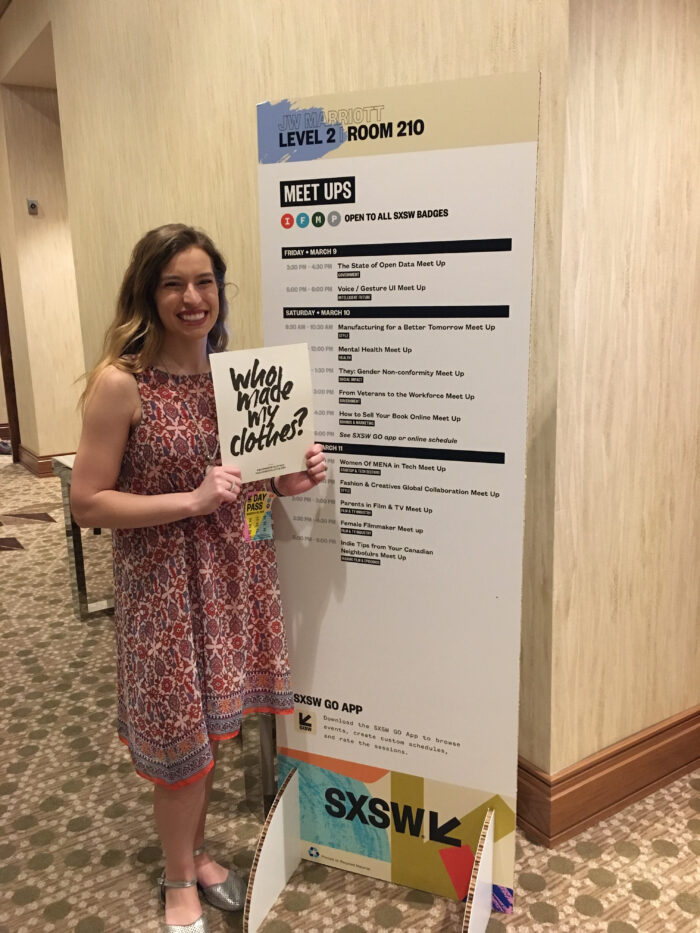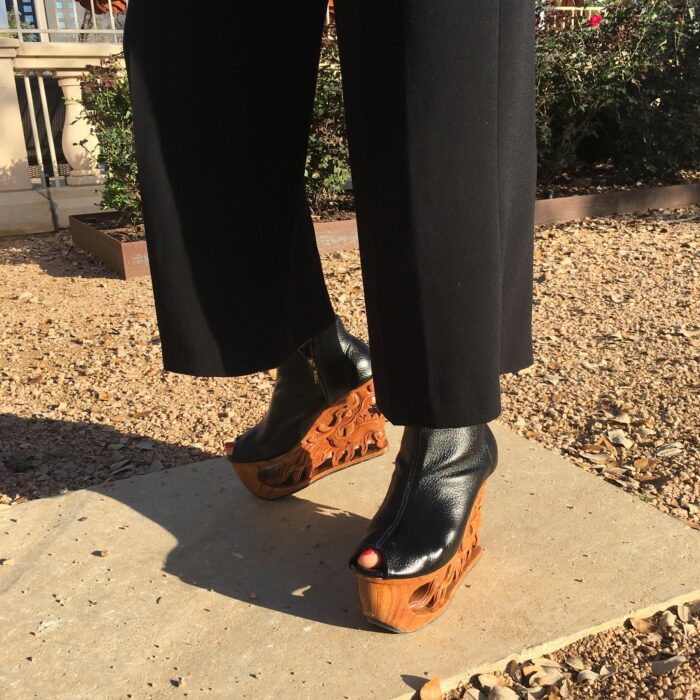Beyond Music & Tech: SXSW Considers Issues in Fashion
By Kasi Martin
In Spring, before the hype of April’s global Fashion Revolution events, I attended South by Southwest in my hometown of Austin, Texas.
South by, its more chat-ready name, is a music and tech lover’s Tulum (and the tacos and mezcal are just as good). This year, however, the conference promised to deliver a dynamic style track and I was there to get the scoop.
A tidbit of history
The conference started in the late 80’s and has gained prominence by marrying robust day schedules with festive nights that honor the city’s funky live-music culture. To give you an idea of the scope, in 2017 more than 400,000 people, spanning 95 countries attended or participated. Most of the turnout was from the marketing, film, music, media and tech industries. Apparel and fashion ranked third to last.
So why does the style track matter to Fashion Revolution?
To understand, I had to dig back in history. For starters, the conference is broken into four distinct tracks. The newest one, ‘Interactive,’ was introduced in ‘94 as an offshoot of the film track. Originally, it focused on multimedia arts and expanded to cover more ‘lifestyle’ topics like marketing, design, health and wellness and, most recently, style.
Style plays a bigger role
Formally, I believe these tracks began last year. [SXSW® Style] and based on my experience this year, I’d bet apparel and fashion bumped up in the aforementioned ranks.
Style sessions spanned three of the 10 conference days. On day one, I beelined it past the Austin Convention Center and its massive keynotes (sorry, Elon) and headed for the more boutiquey- feel at the Four Seasons.
The agenda started tech-heavy, as I imaged. There was lots of talk about the ‘retail apocalypse’ and the impact of Artificial Intelligence on fashion. The ‘connected’ Levi’s jacket that’s now renowned in fashion circles was frequently cited as an example of future-focused fashion. The idea: eventually our clothes and shopping experiences will better integrate into our digital lives.

An attendee at SXSW asks: Who Made My Clothes?
Ethics in focus
Despite tech being the hero of South by, the style tracks really shined in addressing ethics and sustainability. If you’ve been following Fashion Revolution, you know that progress has been made since the Rana Plaza factory collapse, but so much work remains. To see the panelists at South by tackle the issues in such a direct way was encouraging.
While I was there, I had some off-the-cuff conversations with a few of the panelists and wrote mini interviews called #TransformFashionInTwo for the Fashion Revolution USA Instagram. But the main themes unfolded in the keynotes. Of 50 total style sessions, 10 focused on ethics or sustainability.
These were the key themes:
It starts with circularity
This has been the hot button topic at fashion conferences across the world for about two years (Copenhagen Fashion Summit, WEAR). On one hand, it’s exciting to see the industry discussing these ideas, but on the other, I find that they only tackle the big picture. I’m often left wondering: How does a brand actually implement circular practices?
This is what I appreciated most about South by. The panelists went deep. We heard from global powerhouse brands and independently-owned artisan brands, who were each working on specific micro-initiatives to address circularity. These themes serve as examples of their work and show how wide-ranging circularity can be in action.
Culture and Craft
Circularity is future-focused, so I expected to hear a lot about technical advances in recycling and textiles. I also imagined that fashion tech ideas would be more enticing to large brands hoping to showcase innovation and sustainability. Typically, these benchmarks are easier for businesses to quantify and attribute to their bottom lines than the more nuanced, human side of fashion, even though both are equally important.
So that begged the question: Will traditional craft and human rights be forgotten as tech advances?
Not according to Lanvy Nguyen. To her, couture is where craft can explode and she’s proving it with her line Fashion for Freedom. During the panel, Sustainability and Ethics in Fashion Technology, she spoke about how she preserves traditional woodcraft techniques in Vietnam and marries them with a high-fashion concept in her women’s footwear and jewelry.

Fashion for Freedom preserves traditional woodcraft techniques
“I fight hard against the notion of ‘crafty’ in all my designs, she said. “You won’t find a hand carved shoe like this in mainstream fashion.”
In addition to her own luxury line, Lanvy is helping other artisan brands stand out and compete through a business model where she provides production and support services and helps them identify exactly who made their goods. She built the first transparent supply chain in Vietnam and decided to share it with others to make it easier for them to get started.
“If a smaller brand struggles at the outset, they’re less likely to stay in business. So on one hand, we’re helping individual artisans, while also supporting the craft industry at-large.”
This is the heart and soul of Fashion Revolution. Ensuring the people who make our clothes are treated with respect and dignity and taking a holistic approach that embraces slow fashion and new technologies.
The sentiment at South by echoed Fashion Revolution’s mission – bring everyone together, despite their differences, to transform the industry.
Come back next week for three more fashion tech themes from South by Southwest.





